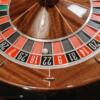Table of Contents
Go Fish
Your turn — click one of your cards to ask for that rank.
Your Hand
CPU Sets: 0
Go Fish is one of the most popular and family-friendly card games in the world. It’s simple to learn, fast to play, and great for players of all ages. While Go Fish seems easy, there are many commonly misunderstood parts—like how many cards you should start with, what happens when you run out of cards, and whether you get another turn when you make a match.
This complete guide covers the official Go Fish rules, how to play step-by-step, scoring, variations, and answers to every frequently asked question. Whether you're playing with two people, a family group, or teaching kids, this article gives you everything you need to play the classic Go Fish card game correctly.
Download Go fish rule book and score sheet
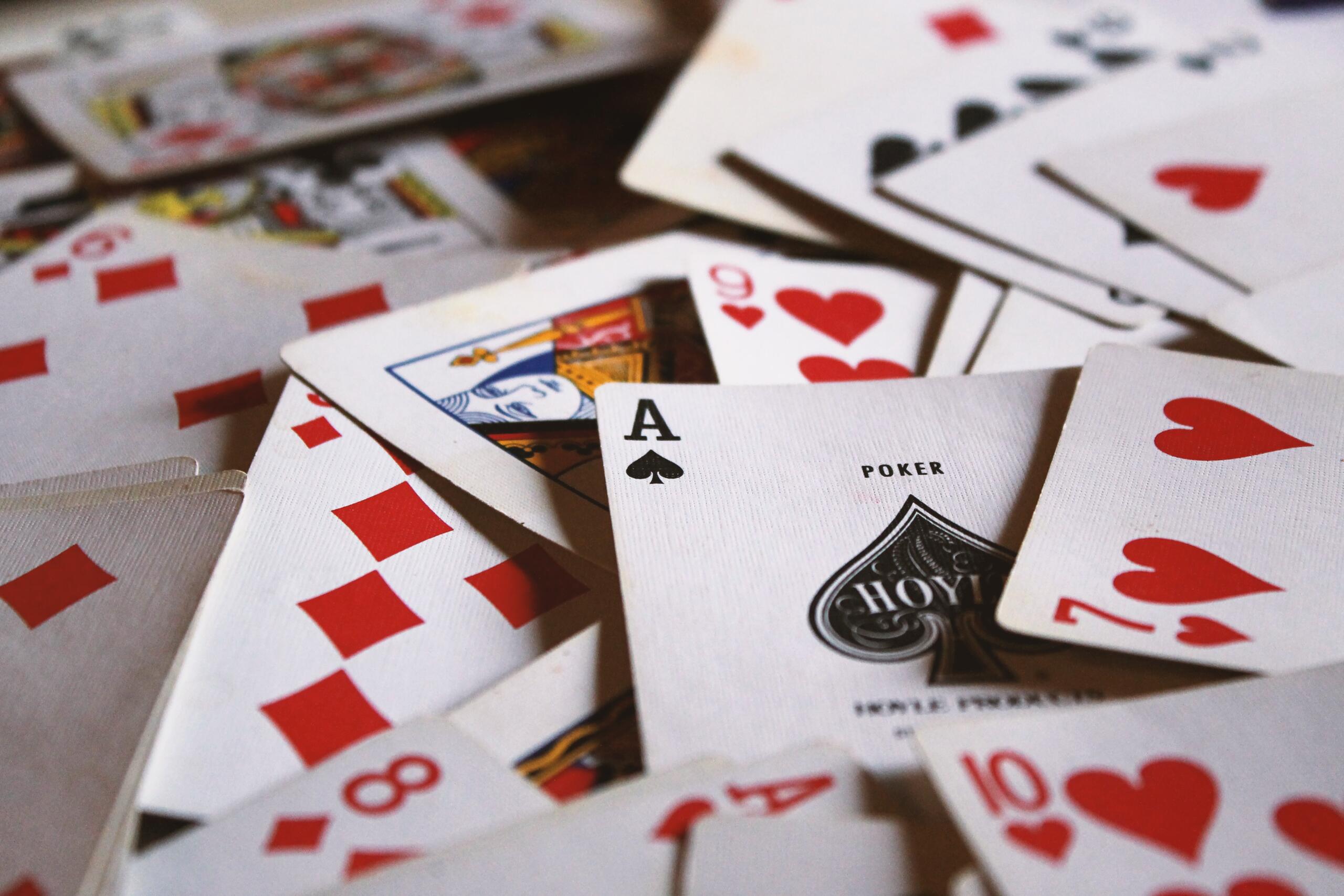
What Is Go Fish?
Go Fish is a card-collection or “set-building” game. The goal is to collect sets of four cards of the same rank (for example: four Kings, four 7s, etc.), known as books. Players take turns asking others for specific cards, and if they don’t get the card they wanted, they must “Go Fish” from the draw pile.
What Are the Basic Rules of Go Fish?
Here are the official Go Fish rules in their simplest form:
- Deal cards to each player (usually 7 cards each for 2 players, 5 cards each for 3+ players).
- The rest of the deck becomes the draw pile (the “fish pond”).
- Players take turns asking another player for a card of a specific rank they already have at least one of.
- If the asked player has the card, they must give all copies of that rank.
- If they do not have it, they say “Go Fish!”, and the asking player draws a card from the deck.
- If the drawn card matches the requested rank, the player gets another turn.
- When a player collects four of the same rank, they lay the set down.
- When all possible sets are collected, the game ends.
- The player with the most completed sets wins.
How Many Cards Do You Start With in Go Fish?
The number of cards dealt depends on the number of players:
| Number of Players | Cards Each Player Receives |
|---|---|
| 2 Players | 7 Cards Each |
| 3–6 Players | 5 Cards Each |
So you do not always keep 7 cards. The 7-card rule is only for two-player Go Fish games.
Do You Have to Ask Someone Specific for Cards?
Yes. On your turn, you choose one other player and ask for a specific rank. Example:
“Do you have any Jacks?”
You must already hold at least one Jack in your hand to ask for Jacks.
You cannot ask for a card you don’t possess.
Can You Ask Anyone? — Go Fish Rules on Choosing Players
Yes, in standard Go Fish rules, you are allowed to ask any player at the table for a card on your turn. You simply choose who you want to ask and request a specific rank (for example: “Do you have any Queens?”). The only requirement is that you already have at least one card of that rank in your hand before you can ask for it.
However, some households and classrooms play a simplified variation where you may only ask the player to your left. This version is often used for younger children, as it removes the strategic decision of choosing which opponent to target.
The official and most commonly used version lets you ask any player of your choice, which adds strategy. Skilled players pay attention to:
- What ranks others have asked for
- Which cards seem to be circulating
- Which players might be close to forming a set
Being able to choose the opponent gives players an opportunity to use memory, deduction, and bluff detection (even though lying about your cards is not allowed). This is part of what makes Go Fish more strategic than it might first appear.
In short:
| Version | Who Can You Ask? | Common Use |
|---|---|---|
| Official Rules | Any player at the table | Most games, standard play |
| Simplified Variation | Only the player to your left | Young children / teaching |
Choosing who to ask is a meaningful and strategic part of the game — and the flexibility to ask anyone is one of the reasons Go Fish remains fun for both kids and adults.
Go Fish Rules Step-by-Step (How to Play Go Fish)
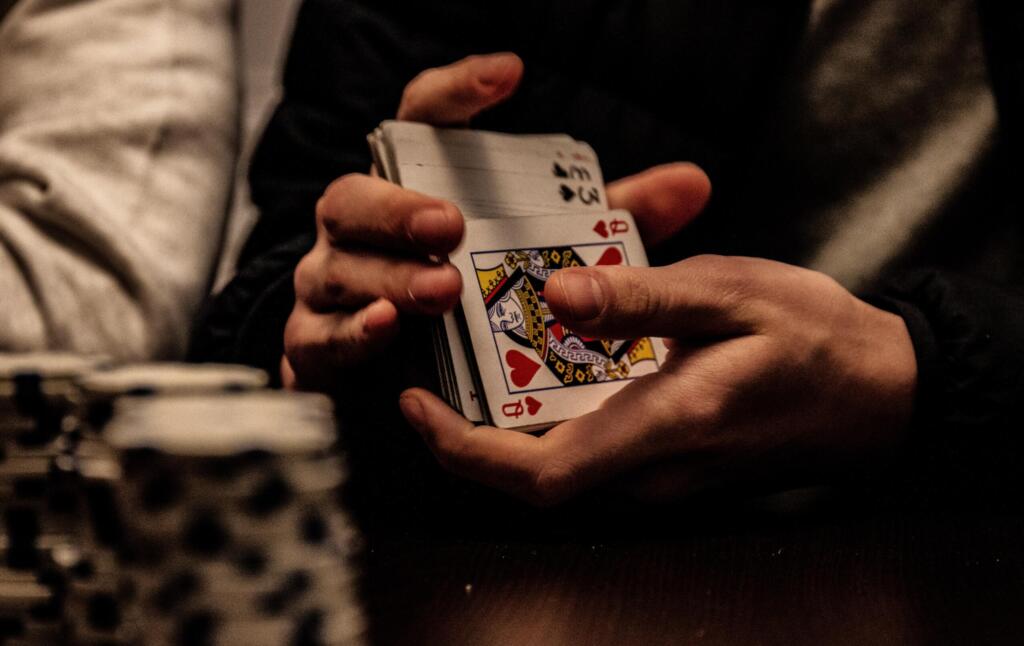
Follow these steps:
1. Shuffle and Deal
- Use a standard 52-card deck.
- Deal cards depending on player count (5 or 7).
- Place remaining cards face-down as the fish pond.
2. Determine Who Goes First
Common methods:
- Youngest player goes first (common in family play).
- Rock–paper–scissors.
- Dealer's left.
3. Ask for a Rank
On your turn:
- Choose a player.
- Ask for a rank you already have.
- Example: If you have a Queen, you may ask for Queens.
4. Receiving Cards
If the asked player has one or more cards of that rank:
- They must hand over all of them.
- You continue your turn.
5. “Go Fish!”
If they don’t have the card:
- You draw one card from the deck.
- If you draw the rank you asked for, you get another turn.
- If not, your turn ends.
6. Forming and Laying Down Sets
When you collect four of a kind, place the set face-up in front of you. This is called a book.
7. Running Out of Cards
If your hand becomes empty you must draw 5 new cards (or draw until the draw pile is empty).
8. Ending the Game
When the draw pile is empty and no more books can be formed, the game ends.
Winner = player with the most completed books.
Do You Always Keep 7 Cards?
No — you do not always keep 7 cards in your hand during Go Fish.
The number of cards you start with depends on how many players are in the game:
- If there are only 2 players: Each player is dealt 7 cards at the start.
- If there are 3 or more players: Each player is dealt 5 cards each.
This is the standard rule used in most official instructions and published versions of Go Fish.
However, this number only applies to the initial deal, not throughout the entire game.
There is no rule stating that players must hold a certain number of cards in their hand while playing. The size of each player’s hand will naturally go up and down as they:
- Gain cards when other players hand over matches
- Draw from the “fish pond” (the deck)
- Lay down completed sets (also called “books”)
This means your hand might temporarily shrink to just a couple of cards or even go to zero. If your hand becomes empty and there are still cards left in the deck, you simply draw 5 new cards to continue playing. If the deck is empty, you continue without drawing — you are still in the game and can still be asked for cards you previously collected.
So in short:
| Situation | Cards You Start With | Do You Maintain That Number? |
|---|---|---|
| 2 Players | 7 Cards | No — hand size changes during play |
| 3 or More Players | 5 Cards | No — hand size changes during play |
Your hand size does not remain fixed at any point in the game. The flow of drawing, asking, and forming sets naturally changes how many cards you hold at any time.
What Happens When You Get a Pair or a Set in Go Fish?
- A pair of two matching cards is not enough to lay down.
- You must collect four of the same rank.
- Once you have all four, place them down in front of you.
Do You Keep Going If You Get a Match in Go Fish?
Yes.
If you either:
- successfully take cards from another player, or
- draw the card you asked for from the pile:
➡️ You get another turn.
This is one of the main strategic elements of Go Fish.
Can You Go Twice in Go Fish?
Yes — you continue your turn in Go Fish as long as you successfully get the rank you asked for.
Your turn only ends when you do not receive the card you requested.
This can happen in two ways:
- The player you asked does not have the card and tells you to “Go Fish!”
- You draw from the deck, but the card does not match the rank you asked for.
If either of those occurs, your turn ends and play moves to the next person.
However, if you do get the card you asked for — either by receiving it from another player or by drawing it directly from the deck — you earn another turn immediately. This is one of the most strategic parts of the game because it allows a skilled player to:
- Continue building momentum
- Complete multiple sets in one turn
- Collect cards quickly while other players wait
In some rounds, a single player may take several turns in a row if they consistently request ranks that other players are holding or draw matching cards from the deck.
This “keep going if you succeed” mechanic rewards:
- Memory (remembering who asked for what earlier)
- Observation (noticing which cards reappear)
- Timing (choosing the right moment to ask for certain ranks)
So in summary:
| Action | Does the Player Get Another Turn? |
|---|---|
| Gets 1 or more of the requested card from another player | ✅ Yes, continue the turn |
| Draws the requested card from the deck | ✅ Yes, continue the turn |
| Draws a different card from the deck | ❌ No, turn ends |
| Player asked does not have the card | ❌ No, turn ends (after drawing) |
This rule helps keep the gameplay exciting, especially when someone gets on a lucky streak — or when a well-timed request disrupts another player’s strategy.
What Happens in When You Run Out of Cards?
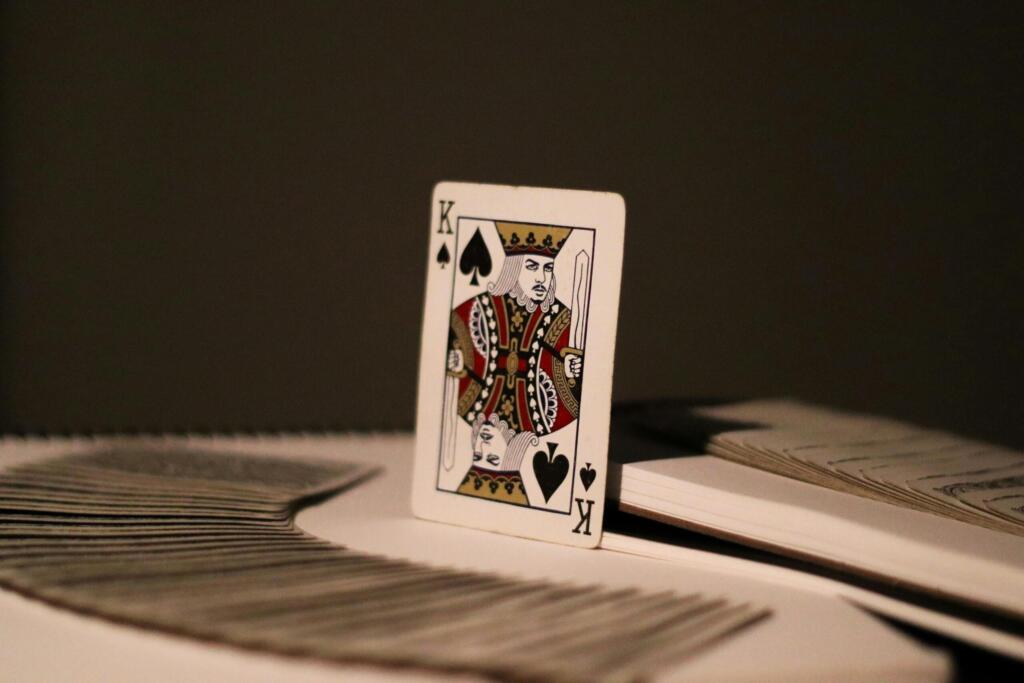
If your hand becomes empty:
- Draw 5 new cards, unless the deck has fewer, in which case draw all remaining cards.
- If no cards remain in the deck, simply wait until someone asks you for a card you have gotten from earlier completed sets or allowed trades.
You do not leave the game when you run out of cards.
How Do You Determine the Winner in Go Fish?
You count the total number of completed sets each player has.
The player with the most sets wins.
If there is a tie, play ends in a draw.
How Many Sets Do You Need to Win in Go Fish?
There are 13 total possible sets in the game (one set for each rank).
You win by having more sets than anyone else when all sets have been claimed.
How to Play Go Fish With 2 People
Two-player Go Fish is played the same way with 7 cards dealt to each player instead of five.
Strategy is stronger in 2-player Go Fish because:
- You know exactly who has or does not have a card.
- Memory plays a much larger role.
Go Fish Strategy: How to Win More Often
| Strategy | Why it Works |
|---|---|
| Track what players ask for | Reveals what cards they have. |
| Ask for ranks you know someone has | Avoids losing your turn. |
| Remember who had which ranks | Useful when ranks circulate. |
| Don't reveal your hand patterns | Be unpredictable. |
| Save certain cards until advantageous | Controls late-game timing. |
Can You Lie in Go Fish?
No — lying is not allowed in Go Fish.
Go Fish is traditionally played as a game of honesty, where all players are expected to tell the truth when asked for a card. If another player requests a rank that you have in your hand, you are required to hand over every copy of that rank — not just one.
This rule is what keeps the game fair and ensures that the strategy relies on memory, observation, and deduction, rather than deception. A key part of Go Fish is remembering:
- Which cards players have asked for
- Who might still be holding certain ranks
- How cards move around the table during play
If lying were allowed, these core gameplay skills would no longer matter, and the game would shift away from strategy toward chance and bluffing — which is not how Go Fish is meant to be played.
Some groups, especially among kids or casual home play, may introduce a house rule where players are allowed to lie or bluff. This variation can be fun, but it is not part of the official Go Fish rules. When lying is introduced, the game begins to resemble other bluffing card games, such as Cheat, Bullshit, or I Doubt It.
So in short:
| Game Style | Are You Allowed to Lie? | Notes |
|---|---|---|
| Official Go Fish Rules | No | You must hand over all requested cards you hold. |
| House Variation / Bluff Version | Yes | Turns Go Fish into a bluffing game, but this is not standard gameplay. |
If your group enjoys competitive strategy, memory, and deduction, stick to the official “no lying” rule.
If your group enjoys chaos and humor, you can try the bluffing variation — but know that it’s no longer standard Go Fish.
Common Kids’ Variation: “Goldfish”
Some children call the game “Goldfish” because of mispronunciation.
The rules of Goldfish are the same as Go Fish.
There is no separate official “Goldfish” game — it is simply the same classic game.
FAQs
What are the rules for Go Fish pairs?
In standard Go Fish, pairs do not count as completed sets. To lay cards down, you must collect all four cards of the same rank (for example, all four 9s). A pair of two cards is not enough unless you are playing a simplified house version for young children.
How many cards do you start with in Go Fish?
The number of cards dealt depends on the number of players:
- 2 players: each player starts with 7 cards
- 3 or more players: each player starts with 5 cards
The remaining cards form the draw pile (often called the “fish pond”).
Do you go again if you draw the card you asked for in Go Fish?
Yes. If you either receive the card you asked for from another player or draw it from the deck, you get to take another turn. Your turn only ends when you draw a card that does not match the rank you requested.
What happens if the deck runs out in Go Fish?
If the draw pile becomes empty, players continue taking turns without drawing. The game continues until no more sets can be formed. Running out of cards in the deck does not end the game immediately.
How do you win in Go Fish?
You win by collecting the most completed sets of four matching cards, called books. Once no more sets can be made and the draw pile is empty, each player counts their books. The player with the most is the winner.
How do we play the standard Fish game?
The “Fish game” is simply another name for Go Fish. To play, deal each player their starting hand (7 cards for two players or 5 cards for three or more players). On your turn, ask another player for a card rank you already have. If they have it, they must give you all copies. If not, they say “Go Fish,” and you draw from the deck. Keep collecting four of a kind to make sets. The player with the most completed sets at the end wins.
How to play Go Fish with 2 people?
When playing Go Fish with two players, each person starts with 7 cards instead of 5. The rest of the rules are the same: ask your opponent for a rank you hold, collect cards to form sets of four, and draw from the deck when told to “Go Fish.” Two-player Go Fish involves more memory and strategy since every card movement is easier to track.
What are the rules to Goldfish?
“Goldfish” is simply a mispronunciation of Go Fish that is commonly used by children. The rules of Goldfish are exactly the same as the rules of Go Fish—collect four matching ranks to form sets, ask players for cards, and draw when told to “Go Fish.”
How do you win the Goldfish game?
To win Goldfish (or Go Fish), collect more completed sets of four matching cards than the other players before the deck runs out and no more sets can be formed.
What are the rules for Go Fish pairs?
In official Go Fish, a pair of two cards is not enough to lay down. You must collect all four cards of the same rank to complete a set. However, some children’s versions allow laying down pairs instead of sets—this is a house variation and not an official rule.
How do you play the Pairs version?
In the Pairs variation, players lay down pairs (2 cards) instead of full sets of four. The game ends when no more cards can be drawn or paired. The player with the most pairs wins. This variation is often used for preschool and early learners because it is simpler and faster.
How many sets do you need to win?
There are 13 total possible sets in the deck (one for each rank). You win by collecting more sets than any other player when the draw pile is empty and all possible sets have been made.
How do you determine the winner in Go Fish?
Once all sets are completed and the draw pile is empty, each player counts their sets. The player with the most sets wins. If two or more players have the same number of sets, the game ends in a tie.
What are the rules to the “fishing game”?
The “fishing game” is just another informal name for Go Fish. The rules remain the same: ask players for card ranks you hold, collect sets of four, and draw when told to “Go Fish.”
How to determine who wins in “Go”?
This question refers to the board game Go, which is different from Go Fish.
In the board game Go, the winner is determined by who controls more territory on the board after both players pass their turns.
This rule does not apply to Go Fish.
Conclusion
Go Fish is a simple yet strategic card game that emphasizes memory, patience, and observation. The rules are easy enough for children, but the strategy is deep enough to make the game enjoyable for adults as well. Whether you're playing casually or teaching the game to new players, understanding the official rules will ensure smooth, fair, and fun gameplay.

![7 Best No Deposit Bonus Casino NZ Offers [2025 Guide]](https://casinochecking.nz/wp-content/uploads/2025/11/featured-image-a3cb65a7-2993-4701-bc7e-76c5d8217612-450x338.jpg)
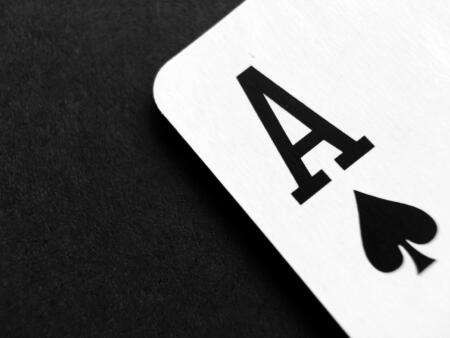

![7 Best No Deposit Bonus Casino NZ Offers [2025 Guide]](https://casinochecking.nz/wp-content/uploads/2025/11/featured-image-a3cb65a7-2993-4701-bc7e-76c5d8217612-100x100.jpg)






